Hmong Kings’ Palace: A Cultural Treasure in Ha Giang
The Hmong Kings’ Palace in Ha Giang is evidence of the rich cultural legacy of the Hmong people as much as a magnificent architectural masterpiece. MOTOGO Tours will discuss in this post the importance of the palace, its architectural wonders, and reasons it ought to be on your vacation schedule.
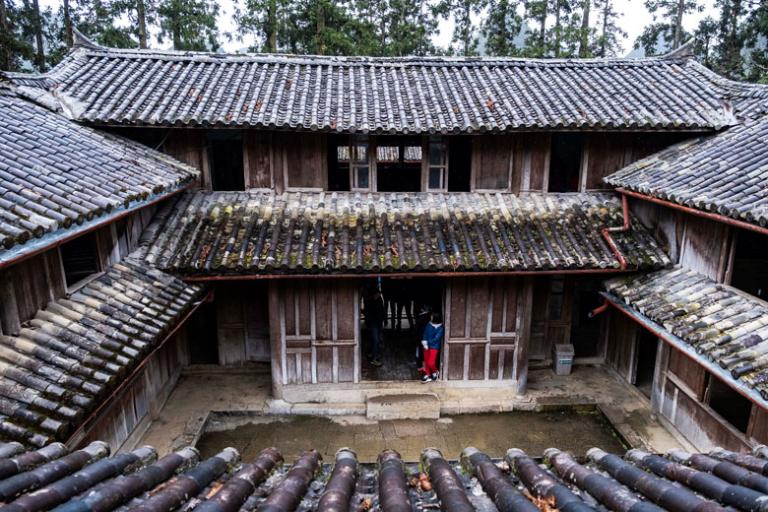
Overview of the Hmong King’s Palace
About 125 kilometers from the city center, the Hmong King’s Palace, sometimes known as Dinh Thu Ho Vuong (the Vuong family’s mansion), is tucked away in the Lung Phin Commune in Dong Van District. Notable residents of this ancient mansion, Vuong Chinh Duc and his son Vuong Chi Sinh, abound in heritage. Vuong Chinh Duc (1886–1962) was the feudal ruler of the Hmong ethnic group, hence gaining the powerful title of “Hmong King.” Later on, his son accepted the revolutionary movement and made major contributions to the country.
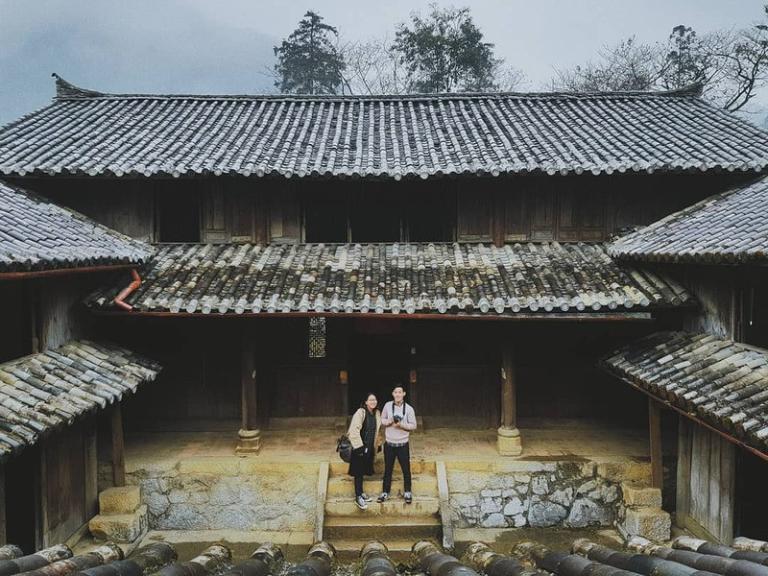
A Glimpse into History
Beginning in 1898 and finished in 1907, the Hmong King’s Palace was built with an incredible expenditure of 150,000 silver coins from Indochina—equivalent to a staggering 150 billion VND today. Working with the Hmong people, talented Chinese artisans from Yunnan Province brought this architectural wonder to life, producing an amazing construction covering more than 1,200 square meters.
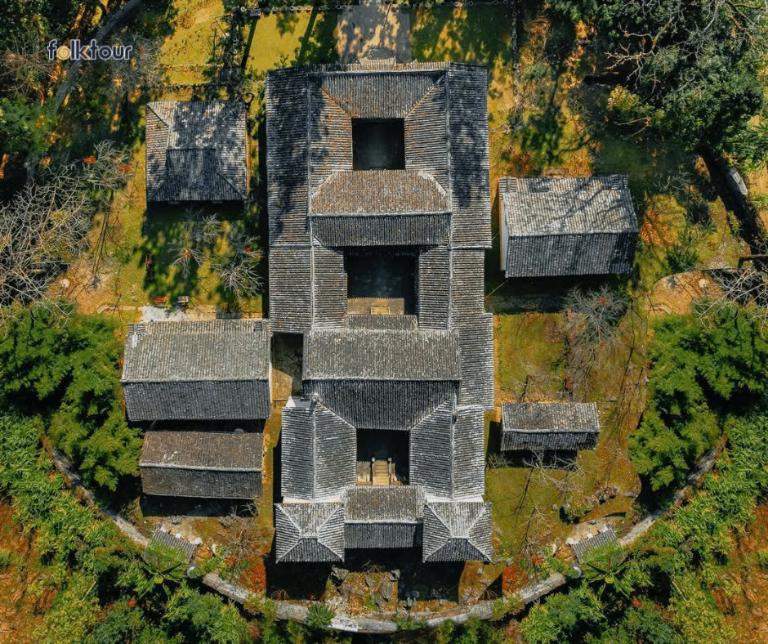
Nearly a century after it was first built, the palace was named a National Relic by Vietnam’s Ministry of Culture, Sports and Tourism in 1993 due of its great historical and cultural value. Amazingly, this magnificent palace was built totally by hand—no mechanical help at all.
>>> Let’s see more: Tien Waterfall – Gio Pass: A Hidden Gem in Ha Giang
Distinctive Architectural Features
What distinguishes the architectural layout of the palace?
The design of the palace is evidence of its special location at the base of a valley, encompassed by imposing hills. This deliberate orientation lets the whole construction be covered by natural mountain arches shaped like tortoise shells, offering a strong defense during turbulent times. Amazingly, the furniture of the home still looks exactly as it did on opening day, captivating guests who at least once in their lifetime long to uncover its mysteries. More than a century has passed.
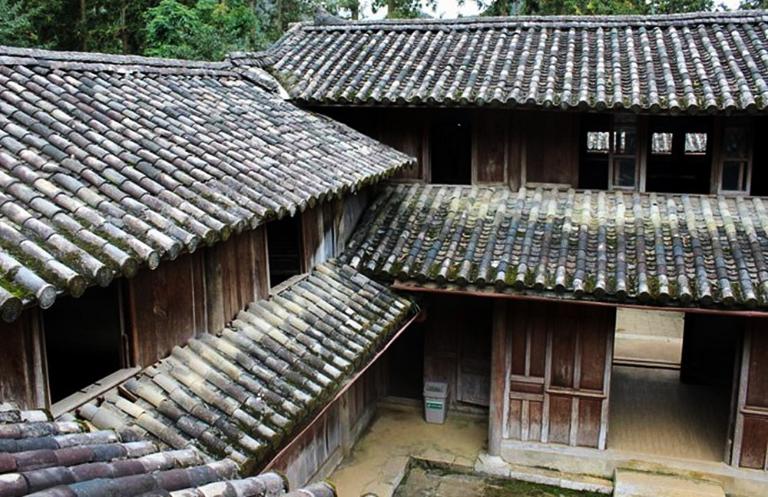
Harmonizing features from Hmong, French, and Chinese influences, the inside of the Hmong King’s Palace is a real cultural tapestry. Divided into three zones—the front area for guards and servants, the central and rear parts where family members live and operate—the layout calls for four horizontal and six vertical buildings.
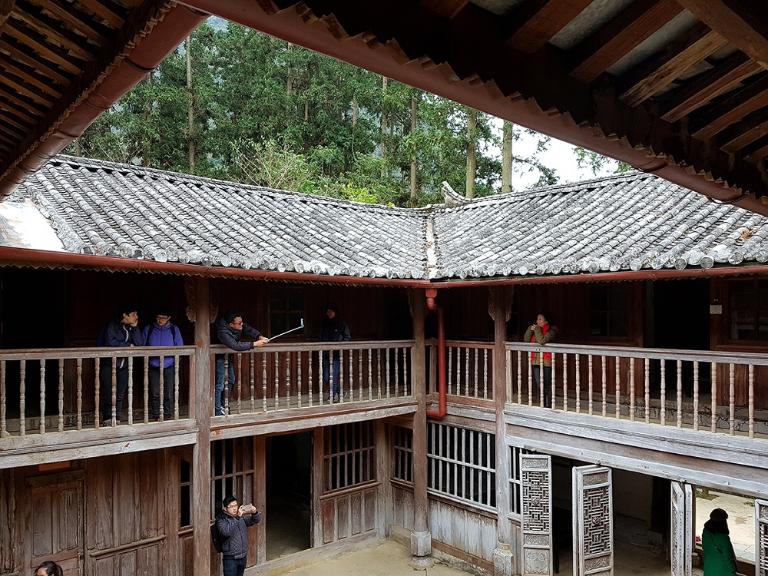
There are sixty-four rooms spread across two stories on this amazing estate. The builders generally used stone to guarantee robustness, therefore strengthening the palace against both enemies and time. While terracotta tiles top the roof and provide longevity and visual appeal, the timber walls and pillars provide the interiors grandeur and flexibility. Among the few architectural wonders that successfully mix defense and residential use nowadays is the Hmong King’s Palace.
An Architectural Harmony
Many tourists comment on the amazing peace even though three different civilizations coexist inside one building. Covering 3,000 square meters, the home does not seem to be all that big; rather, it consists of smaller, rustic plots that capture the core of classic architecture. The villa may easily blend with the surroundings since the design follows a principle of smaller inside spaces complimented by more outside buildings.
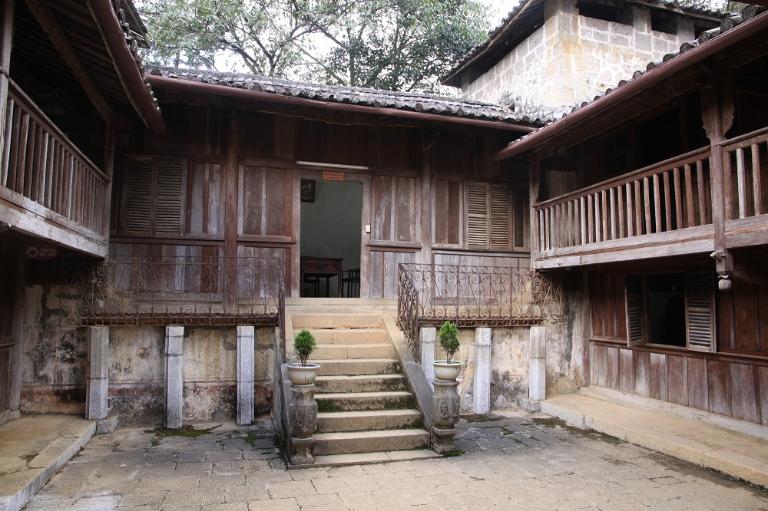
Treasures Within the Palace
The most of the furniture and relics the Hmong King owned during his lifetime are kept intact. Carvings of natural flowers like peaches and poppies embellish the complex wooden constructions, therefore highlighting a remarkable local cultural identity. Especially, the bases of the pillars are finely carved to resemble opium poppy fruits, an homage to the trade that had thrived under the rule of the Hmong King. Among the Western-influenced objects used in this design are granite entrance doors framed in graceful French architectural style, glass shutters next the fireplace, and a stone bathtub.
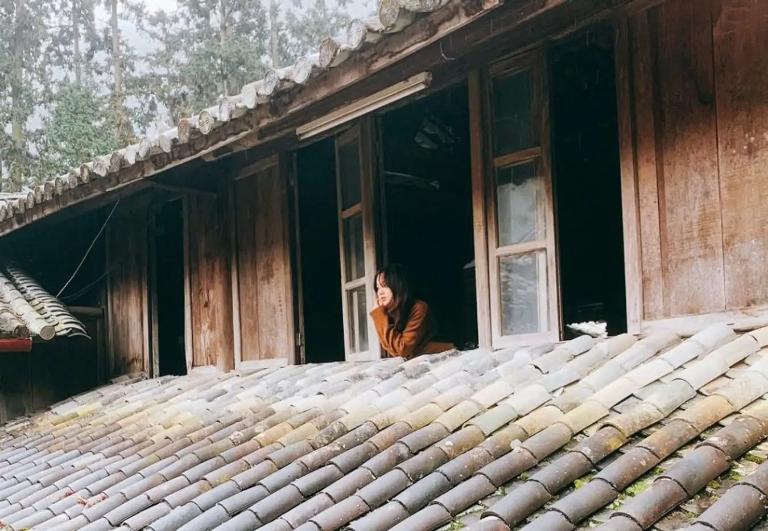
>>> Explore Du Gia Village: A Peaceful Retreat Amidst Nature’s Splendor
Exploring the Surrounding Area
Although the Hmong Kings’ Palace is the focus of Ha Giang, the surrounds are full with amazing sites just waiting to be discovered as well as natural beauty and cultural variety. From amazing scenery to unusual cultural encounters, here’s a closer look at the treasures around the palace.
Near Attractions
Ha Giang is known for its cultural legacy and breathtaking landscape. These are some must-see local sites:
1. Lung Cu Flag Tower
About twenty-five kilometers from the palace, the Lung Cu Flag Tower is a prominent monument indicating Vietnam’s northernmost point. Rising 1,470 meters, the tower provides panoramic views of the stunning scenery including traditional Hmong communities, terraced rice fields, and rolling hills. The tower represents national pride, and many guests leave with a strong bond to the country.
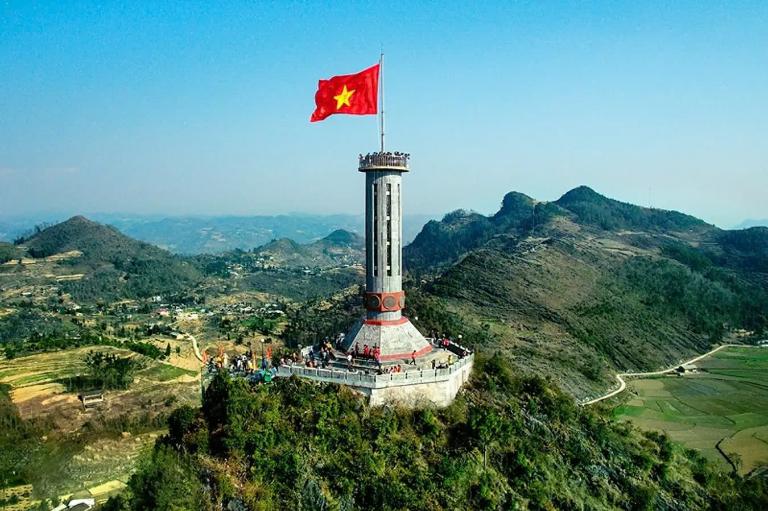
2. Dong Van Karst Plateau Geopark
Acknowledged as a UNESCO Global Geopark, the Dong Van Karst Plateau is a geological marvel displaying a distinctive scene marked by limestone mountains, deep valleys, and great biodiversity. Comprising the Hmong, Tay, and Dao, among other ethnic minority groups with distinct customs and cultures, the geopark is home to Discover terraced rice fields, rich vegetation, and old rock formations as you tour the area.
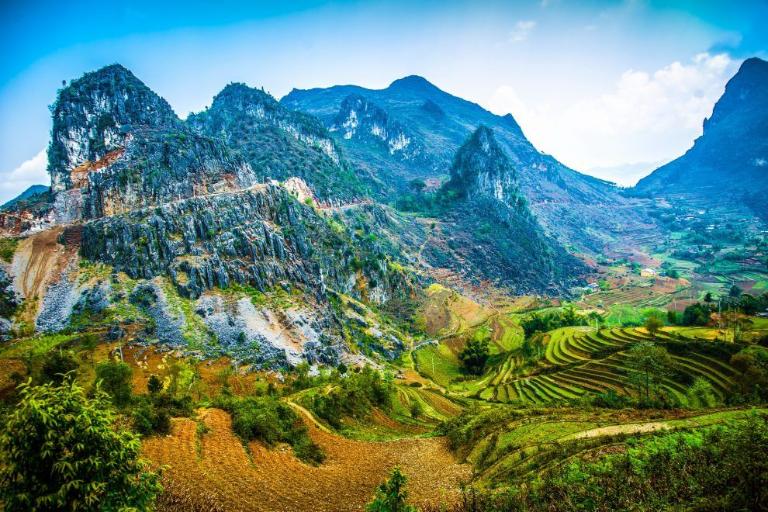
3. Ma Pi Leng Pass
Connecting Dong Van and Meo Vac districts, the Ma Pi Leng Pass—considered one of Vietnam’s most beautiful mountain passes—is Breathtaking vistas of the Nho Que River and the adjacent karst mountains abound along this meandering path. Trekking or motorbiking the pass can be an exciting event for those with adventurous souls. Prepare your camera; the landscape is picture-perfect on postcards!
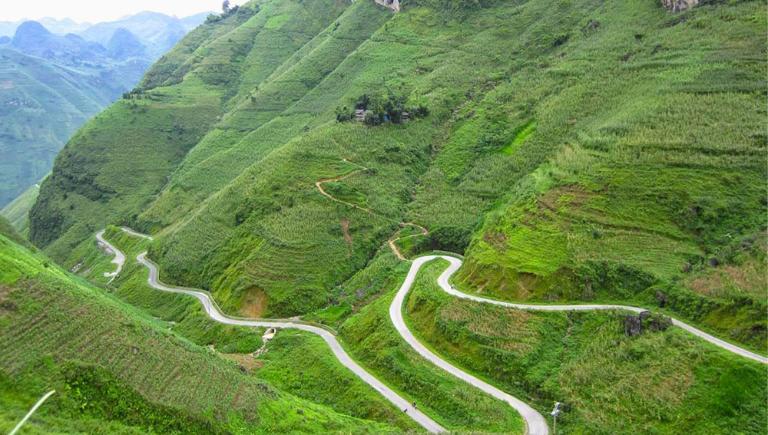
Cultural Experiences
Ha Giang is a center of diverse cultural events beyond the breathtaking scenery that could help you to better know the Hmong and other ethnic groups.
1. Interacting with Local Communities
Interacting with the local people is among the most enlightening encounters Ha Giang offers. Many Hmong communities welcome guests so they may learn about their everyday life, culture, and way of existence. Participating in a homestay lets you share meals, witness real Hmong hospitality, and maybe engage in local events including farming, weaving, or cooking traditional cuisine.
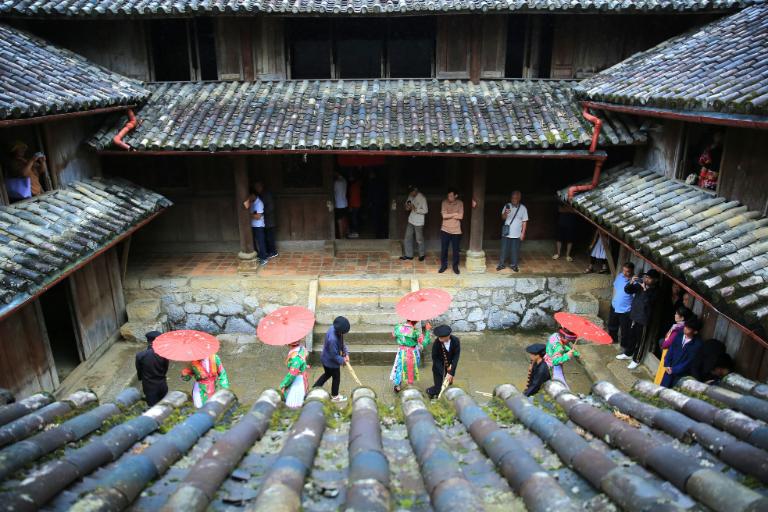
2. Local Crafts and Weaving
Particularly their textiles, the Hmong people are renowned for their complex handcrafts. Around the Hmong Kings’ Palace, several towns provide seminars where guests may pick up traditional weaving methods. This practical knowledge not only lets you make your own Hmong cloth but also boosts the nearby businesses. Direct purchases of exquisite handcrafted goods including bags, clothes, and accessories from the artists will help to guarantee that your visit makes a lasting impression.
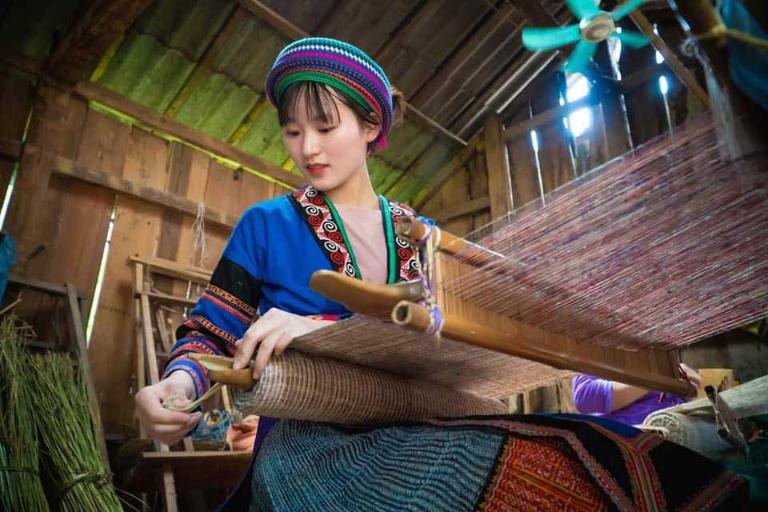
>>> Local Handicrafts in Ha Giang | A Journey Through Culture and Craftsmanship
Culinary Adventures
Without sampling the local cuisine, no study of the surroundings is whole. Ha Giang’s cuisine provides a range of tastes and cuisines, therefore reflecting the rich cultural tapestry of the area.

Try thang co, a classic Hmong meal composed of horse meat and a variety of herbs, usually savored at celebrations, while in Ha Gieng. Local favorites you shouldn’t miss also are bánh cuốn (steamed rice rolls) and com lam, grilled rice in bamboo tubes. Many of the eateries around the palace offer these real meals, thereby allowing you a real flavor of Hmong cooking methods.
Visiting the Hmong Kings’ Palace
Making plans to visit the Hmong Kings’ Palace can be a rewarding trip full of picturesque beauty and cultural awareness.
Getting There: Travel Tips
Getting to the Hmong Kings’ Palace offers an adventure all by itself. Arriving mostly from Ha Giang city, most visitors have buses, scooters, and private vehicles among their means of mobility. The path to the palace winds you across twisting roads with amazing views of the valleys and mountains.
Best Time to Visit
Ideally, one should visit the palace during the dry season, from October to April. The scenery is especially lovely and the temperature is nice during these months. With its blossoming blossoms, spring presents a certain appeal that one should not miss.
Entrance Fees and Opening Hours
Visiting the palace is really reasonably priced; entrance costs usually range from 10,000 to 30,000 VND. Day excursions might find the site open daily from 8 AM to 5 PM.
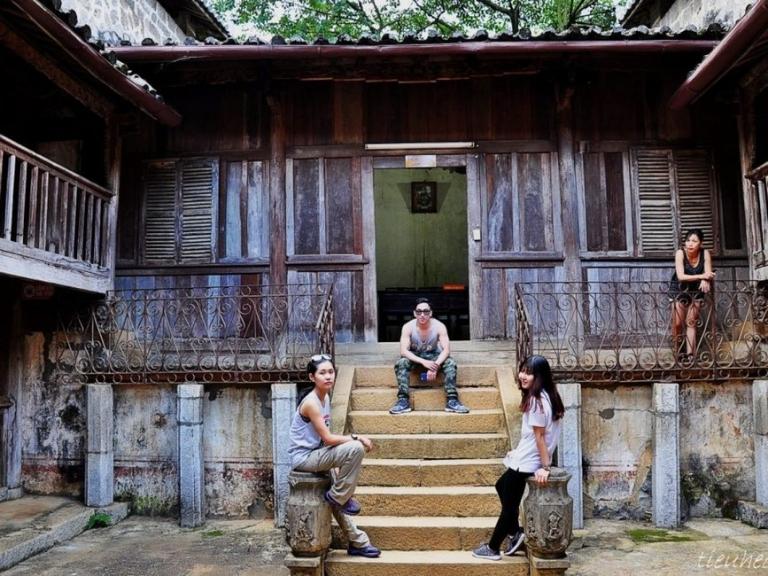
The Hmong Kings’ Palace is a living monument to the legacy, hardships, and triumphs of the Hmong people rather than only a historical landmark. For everyone visiting Ha Giang, its distinctive architecture and rich past make it a must-see site.
Related post:
- Yen Minh Pine Forest: A Hidden Gem in Vietnam’s Highlands
- Nho Que River in Ha Giang – A Journey Through Natural Beauty
- Exploring Tu San Alley: A Hidden Gem in Ha Giang, Vietnam
- Lo Lo Chai Village: A Tranquil Retreat at the Nation’s Frontier
- Nam Dam Village: A Timeless Haven of Cultural Harmony





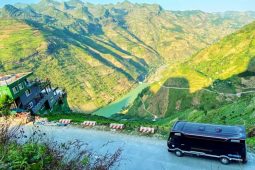

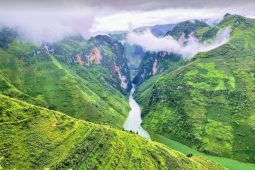
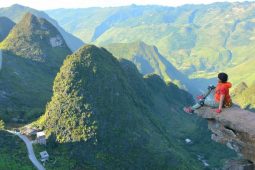
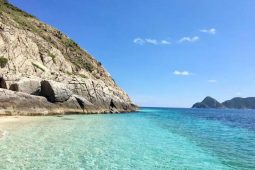
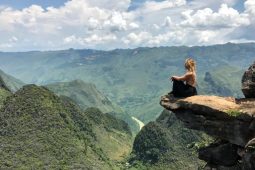
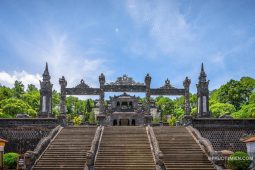
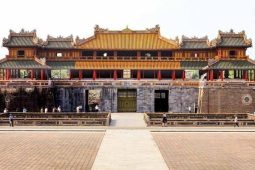

Be the first to comment!